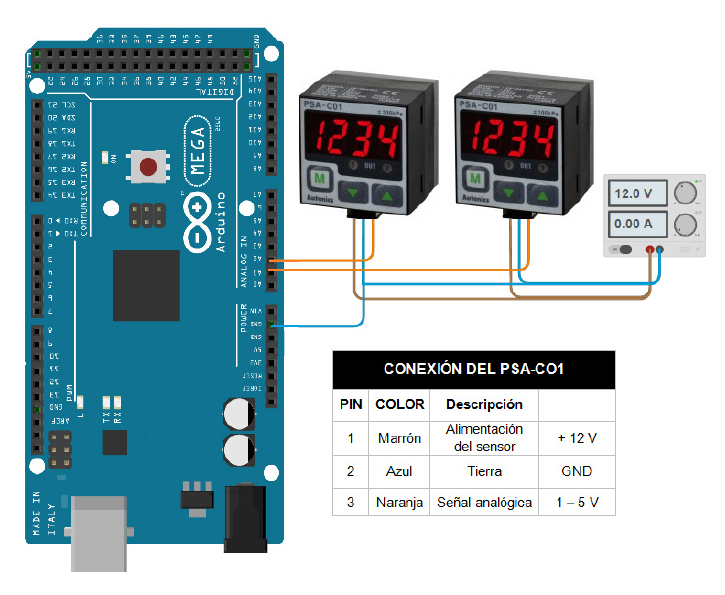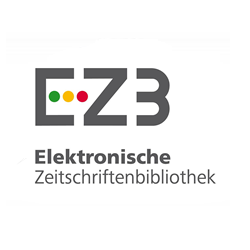Characterization of a DAQ´s system for a Single-cylinder Diesel Engine Test Bench
DOI:
https://doi.org/10.17981/ingecuc.15.1.2019.14Keywords:
test bench, characterization, DAQ, internal combustion engine, signal processingAbstract
Introduction: Given the research potential currently presented by internal combustion engines, a complete characterization of their operating conditions requires taking into account the variety of sensors used to measure their physical magnitudes, the multiple electronic devices used for the conditioning of signals and the standards that define the communication syntax and synchronization. For this reason, it is necessary to develop software as a link between the instrumentation system and the user, to provide real-time visualization and storage of information.
Objective: This study seeks to implement a methodology for the selection and adjustment of the data acquisition system for a Diesel engine test bench, as well as software developed to visualize the variables measured by the instruments.
Methodology: The selection of the instruments used in the test bench was carried out, as well as the design of the signal treatment devices for each instrument, followed by set-up and calibration. Parallel to the above, interactive software was developed in a DAQ´s for the visualization of the results obtained with the acquisition system.
Results: The results indicate that the developed calibration curve produces a considerable fit of the experimental data and using residue analysis it was verified that the linear model developed was adequate to describe the behavior of the sensors.
Conclusions: It was evidenced that 2 of the 7 of the sensors had uncertainty values lower than the measurement unit, which guarantees small or practically negligible deviations from the nominal value. Of the 7 types of instruments implemented, the sensor corresponding to the rotation speed presented the highest value of uncertainty; however, this value is adjusted to the errors allowed in the RPM measurements, which oscillates 5 % of their nominal value.
Downloads
References
J. Duarte, G. Amador, J. Garcia, A. Fontalvo, R. V. Padilla, M. Sanjuan and A. G. Quiroga, “Auto-ignition control in turbocharged internal combustion engines operating with gaseous fuels,” Energy, vol. 71, pp. 137–147, Jul. 2014. Doi: https://doi.org/10.1016/J.ENERGY.2014.04.040
J. Duarte, J. Garcia, J. Jiménez, M. E. Sanjuan, A. Bula and J. González, “Auto-Ignition Control in Spark-Ignition Engines Using Internal Model Control Structure,” J. Energy Resour. Technol., vol. 139, no. 2, pp. 022201, Jul. 2016. Doi: https://doi.org/10.1115/1.4034026
X. Li, Z. Xu, C. Guan and Z. Huang, “Impact of exhaust gas recirculation (EGR) on soot reactivity from a diesel engine operating at high load,” Appl. Therm. Eng., vol. 68, no. 1–2, pp. 100–106, Jul. 2014. Doi: https://doi.org/10.1016/J.APPLTHERMALENG.2014.04.029
J. Fu, G. Zhu, F. Zhou, J. Liu, Y. Xia and S. Wang, “Experimental investigation on the influences of exhaust gas recirculation coupling with intake tumble on gasoline engine economy and emission performance,” Energy Conversion and Management, vol. 127, pp. 424–436, Nov. 2016. Doi: https://doi.org/10.1016/j.enconman.2016.09.033
G. Amador, J. D. Forero, A. Rincón, A. Fontalvo, A. Bula, R. V. Padilla and W. Orozco, “Characteristics of Auto-Ignition in Internal Combustion Engines Operated With Gaseous Fuels of Variable Methane Number,” J. Energy Resour. Technol., vol. 139, no. 4, p. 042205, Mar. 2017. Doi: https://doi.org/10.1115/1.4036044
R. Finesso, G. Hardy, C. Maino, O. Marello and E. Spessa, “A New Control-Oriented Semi-Empirical Approach to Predict Engine-Out NOx Emissions in a Euro VI 3.0 L Diesel Engine,” Energies, vol. 10, no. 12, Nov. 2017. Doi: https://doi.org/10.3390/en10121978
J. Asprion, O. Chinellato and L. Guzzella, “Optimisation-oriented modelling of the NOx emissions of a Diesel engine,” Energy conversion and management, vol. 75, pp. 61–73, Nov. 2013. Doi: https://doi.org/10.1016/j.enconman.2013.05.039
U. Asad, R. Kumar, X. Han and M. Zheng, “Precise instrumentation of a diesel single-cylinder research engine,” Measurement, vol. 44, no. 7, pp. 1261–1278, Aug. 2011. Doi: https://doi.org/10.1016/J.MEASUREMENT.2011.03.028
H. Taghavifar, H. Taghavifar, A. Mardani, A. Mohebbi and S. Khalilarya, “A numerical investigation on the wall heat flux in a DI diesel engine fueled with n-heptane using a coupled CFD and ANN approach,” Fuel, vol. 140, pp. 227–236, Jan. 2015. Doi: https://doi.org/10.1016/j.fuel.2014.09.092
J. Chang, O. Güralp, Z. Filipi, D. Assanis, T. W. Kuo, P. Najt and R. J. Rask, “New Heat Transfer Correlation for an HCCI Engine Derived from Measurements of Instantaneous Surface Heat Flux,” SAE Tech. Pap. 2004-01-2996, pp. 1576–1593, Oct. 2004. Doi: https://doi.org/10.4271/2004-01-2996
M. Yao, H. Wang, Z. Zheng and Y. Yue, “Experimental study of n-butanol additive and multi-injection on HD diesel engine performance and emissions,” Fuel, vol. 89, no. 9, pp. 2191–2201, Apr. 2010. Doi: https://doi.org/10.1016/j.fuel.2010.04.008
M. Reyes, A. Melgar, A. Pérez and B. Giménez, “Study of the cycle-to-cycle variations of an internal combustion engine fuelled with natural gas/hydrogen blends from the diagnosis of combustion pressure,” international journal of hydrogen energy, vol. 38, no. 35, pp. 15477–15487, Nov. 2013. Doi: https://doi.org/10.1016/j.ijhydene.2013.09.071
P. A. A. Montoya, J. L. M. Bastidas y E. I. Ortega, “Cobertura máxima de redes de sensores inalámbricos para un sistema de gestión de energía en hogares inteligentes,” INGE CUC, vol. 12, no. 2, pp. 68–78, Dic. 2016. Doi: http://dx.doi.org/10.17981/ingecuc.12.2.2016.07
H. Liu, J. Ma, L. Tong, G. Ma, Z. Zheng and M. Yao, “Investigation on the potential of high efficiency for internal combustion engines,” Energies, vol. 11, no. 3, pp. 513, Feb. 2018. Doi: https://doi.org/10.3390/en11030513
D. Ashlock y A. Warren, Guía de acondicionamiento de señales para ingenieros. US: National Instruments.
J. R. Lajara, y J. Pelegrí Sebastiá, LabVIEW : entorno gráfico de programación, 2a ed. Barcelona, España: Marcombo, 2011.
R. W. Herschy, “The uncertainty in a current meter measurement,” Flow Meas. Instrum., vol. 13, no. 5–6, pp. 281–284, Dec. 2002. Doi: https://doi.org/10.1016/S0955-5986(02)00047-X
D. S. Moore, G. P. McCabe and B. A. Craig, Introduction to the Practice of Statistics, 9th Ed., NK, USA: Macmillan Learning, 2017.
H. N. Pallares, S. V. Acosta, J. E. D. Forero y A. R. Montenegro, “Implementación de un banco para pruebas en motor Diésel monocilíndrico con aplicaciones investigativas,” Scientia et technica, vol. 22, no. 4, pp. 330–340, Dic. 2017.
J. D. Forero, W. G. Estrada y J. S. Guerrero. “Desarrollo de una metodología para la predicción del volumen real en la cámara de combustión de motores diésel utilizando elementos finitos”, INGE CUC, vol. 14, no. 1, pp. 122–132, May. 2018. Doi: https://doi.org/10.17981/ingecuc.14.1.2018.11

Published
How to Cite
Issue
Section
License
Copyright (c) 2019 INGE CUC

This work is licensed under a Creative Commons Attribution-NonCommercial-NoDerivatives 4.0 International License.
Published papers are the exclusive responsibility of their authors and do not necessary reflect the opinions of the editorial committee.
INGE CUC Journal respects the moral rights of its authors, whom must cede the editorial committee the patrimonial rights of the published material. In turn, the authors inform that the current work is unpublished and has not been previously published.
All articles are licensed under a Creative Commons Attribution-NonCommercial-NoDerivatives 4.0 International License.


 English
English
 Español (España)
Español (España)






















